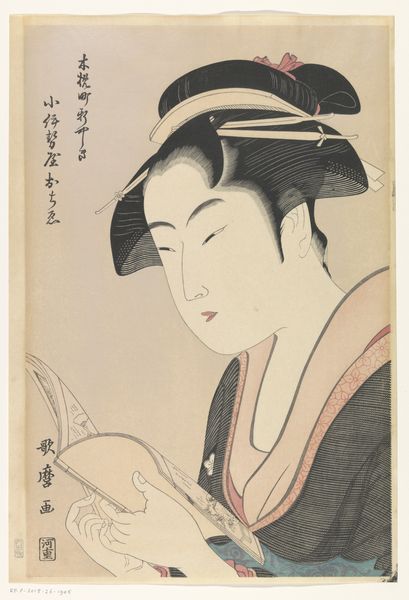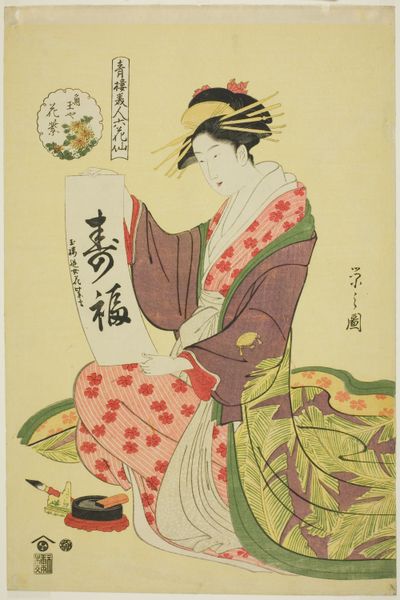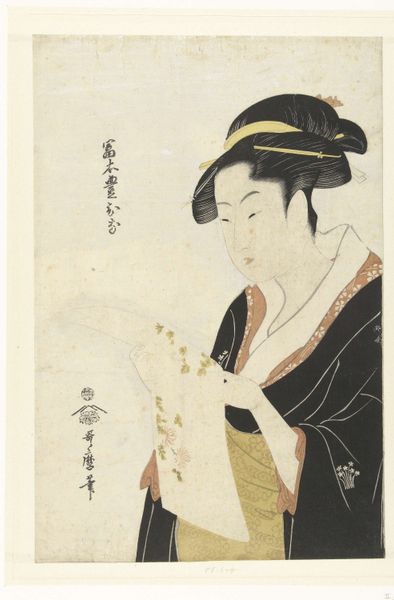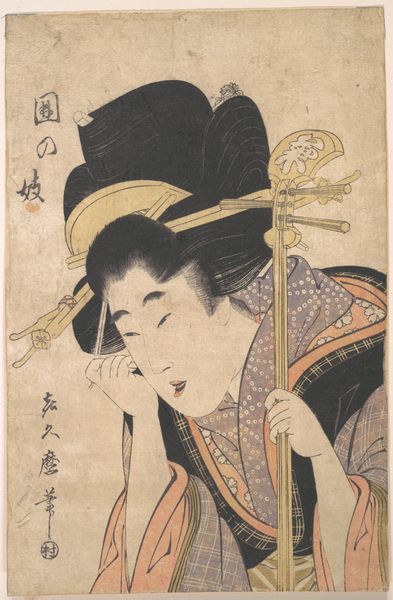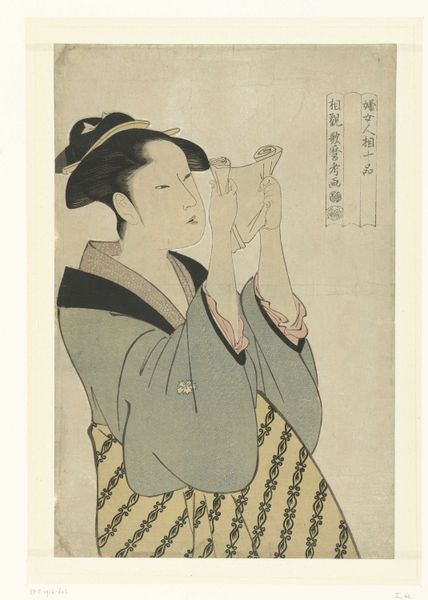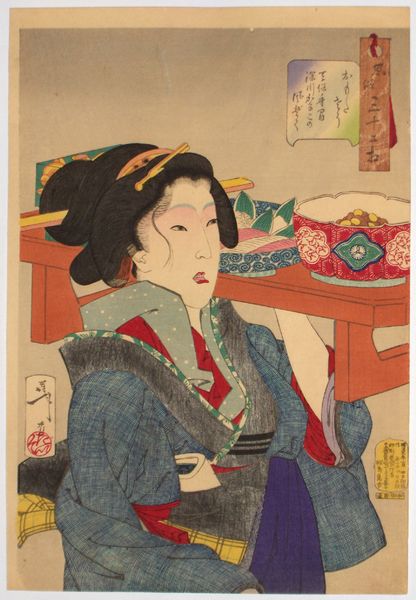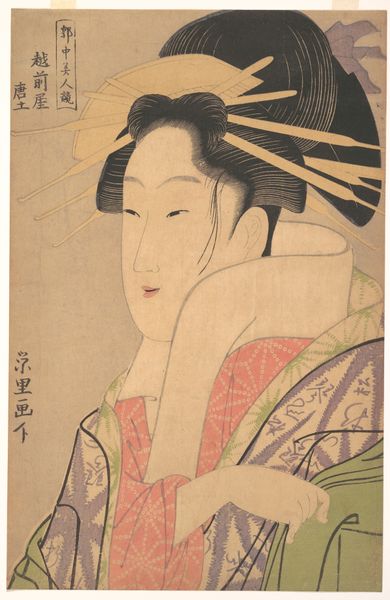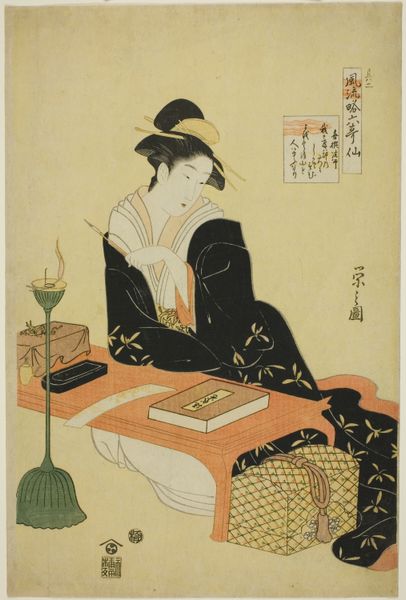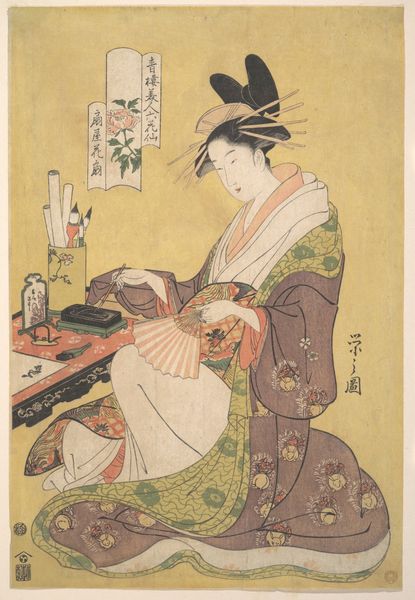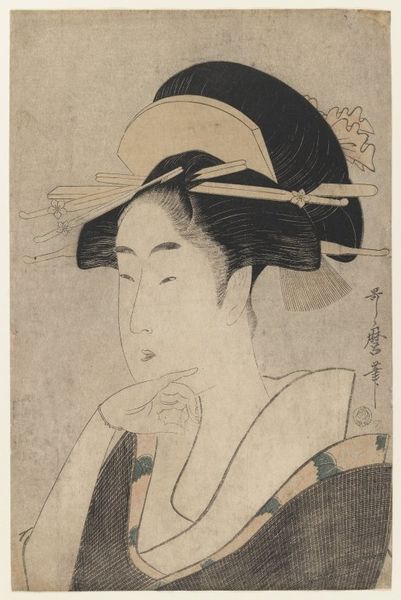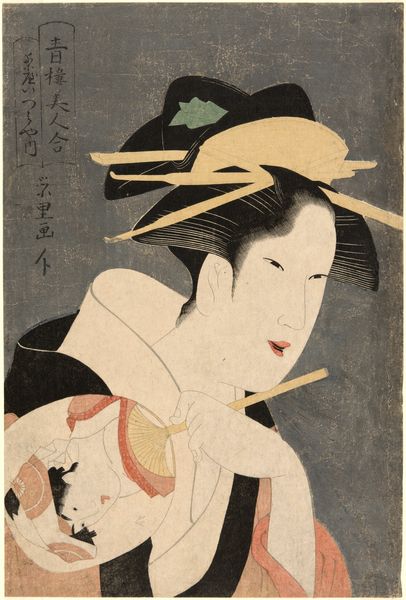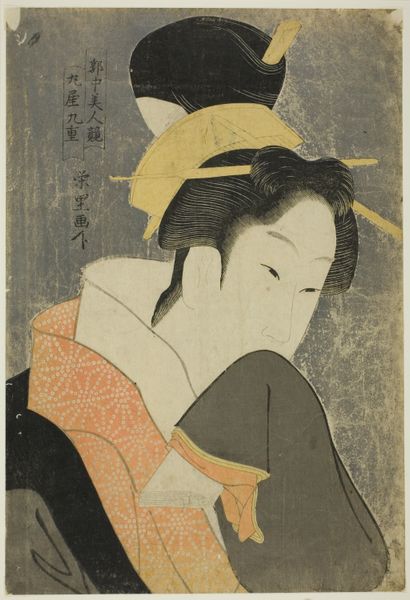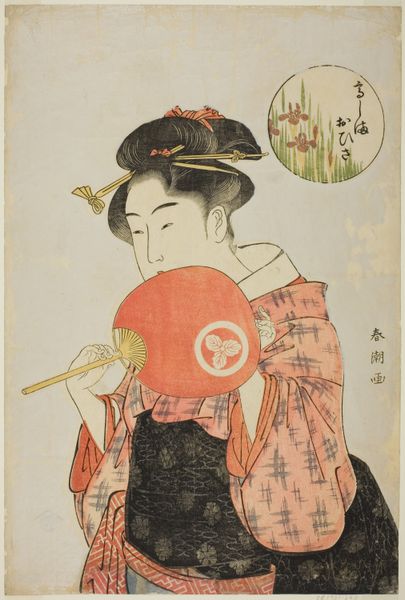
#
portrait
# print
#
asian-art
#
caricature
#
ukiyo-e
#
figuration
Dimensions: Image: 13 7/8 in. × 9 in. (35.2 × 22.9 cm)
Copyright: Public Domain
Editor: We’re looking at "Woman Applying Make-up," a Japanese print from the late 18th or early 19th century by Juka Sekijō, currently residing at the Met. I find it a very intimate, almost voyeuristic scene, observing this woman in her private moment. What do you see in this work? Curator: I see a profound engagement with gender, identity, and the performance of self within a specific cultural context. Consider the Ukiyo-e tradition: these "pictures of the floating world" often depicted courtesans and actors, figures already engaged in a kind of societal performance. This woman applying makeup isn’t simply beautifying herself; she's actively constructing a persona, one deeply intertwined with social expectations and power dynamics. Editor: That’s fascinating! I hadn't thought of it as performance. How do social expectations come into play here? Curator: Well, think about the idealized images of women prevalent during this period. This print, even with its intimate setting, participates in that construction of the ideal. What does it mean for a woman to present herself in this way, knowing she is both subject and object within a male-dominated society? The very act of applying makeup becomes a commentary on female agency – or its lack thereof – within those social confines. Does the presence of the text or the mirror add anything to your thinking about that? Editor: Hmm, I see what you mean. The mirror, of course, reflects back this constructed image, constantly reinforcing it. And the text possibly references her 'role,' solidifying your perspective. I never would have arrived at this conclusion on my own. Thank you. Curator: And thank you. It’s precisely through such dialogue that we can unpack the layers of meaning embedded within these seemingly simple scenes.
Comments
No comments
Be the first to comment and join the conversation on the ultimate creative platform.
